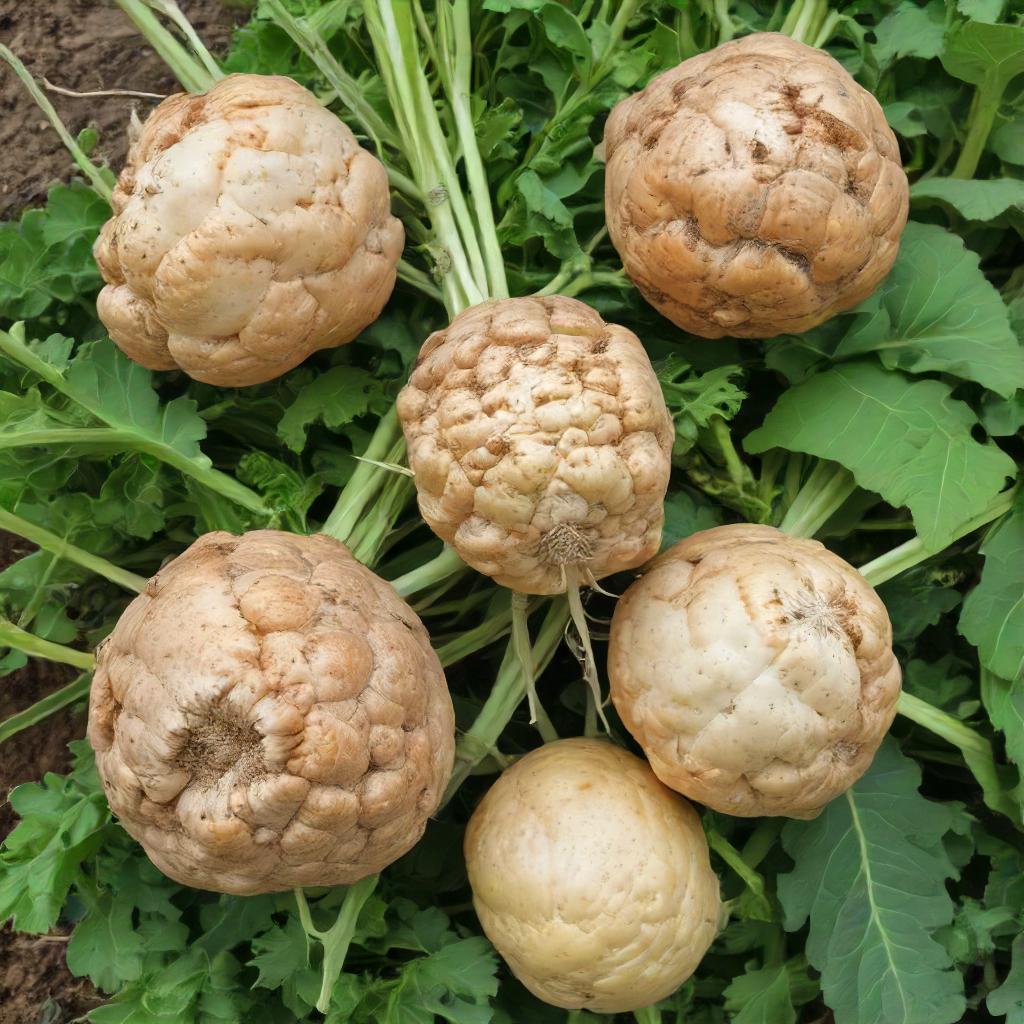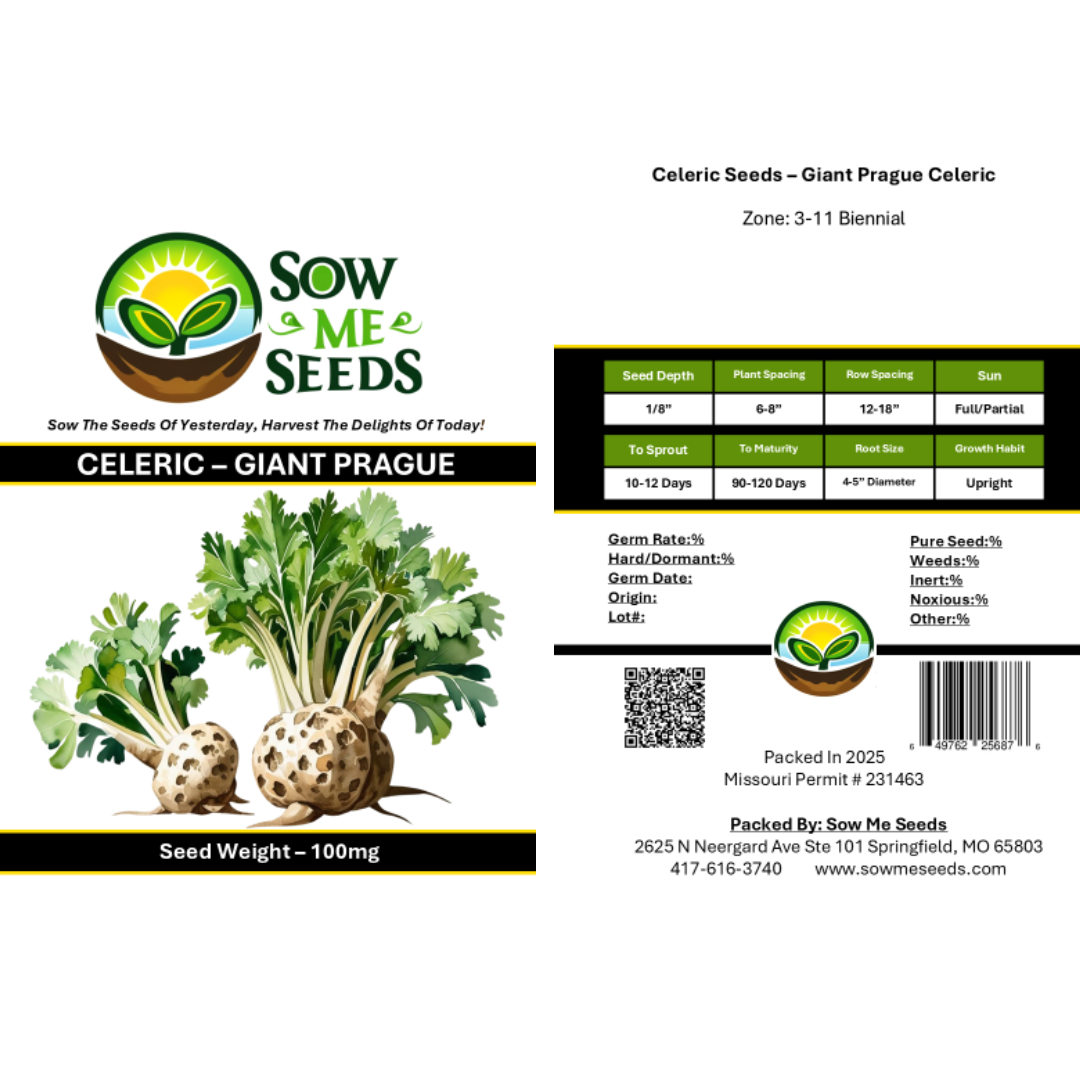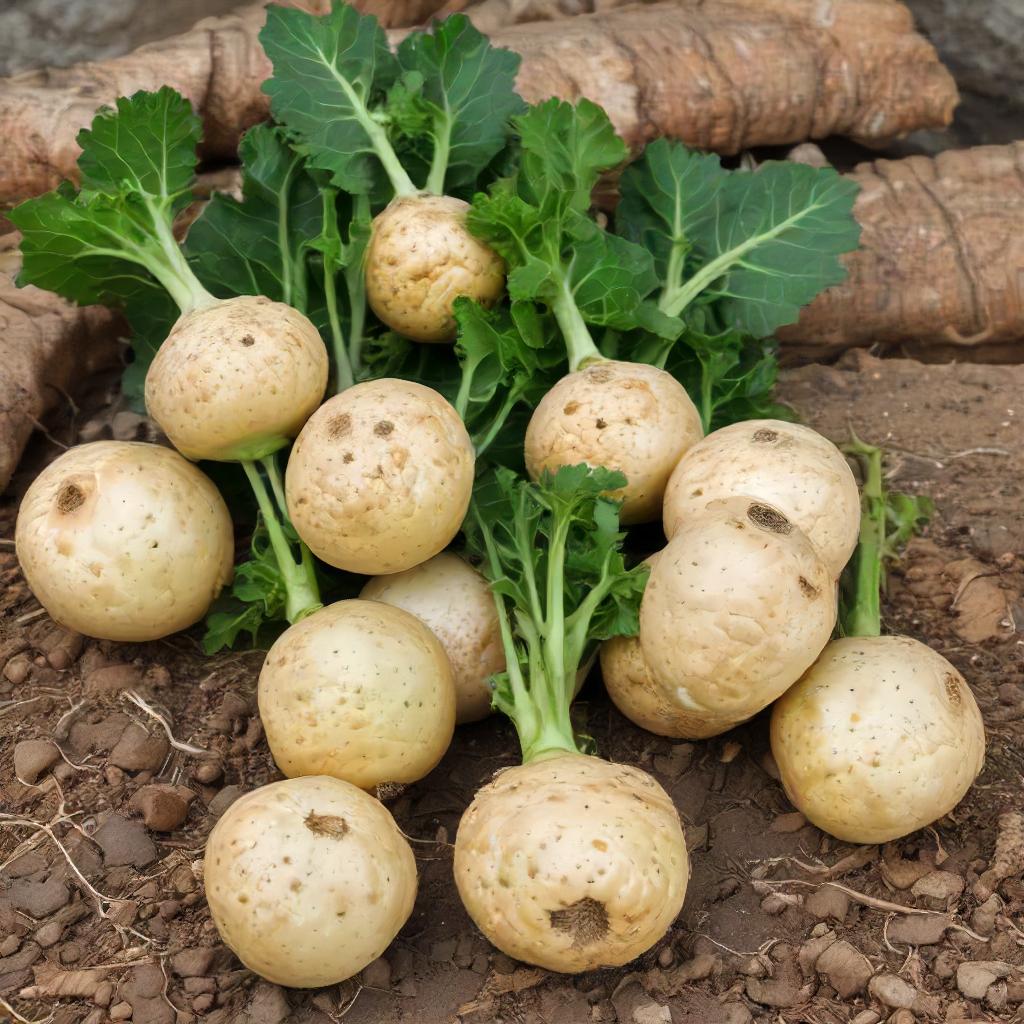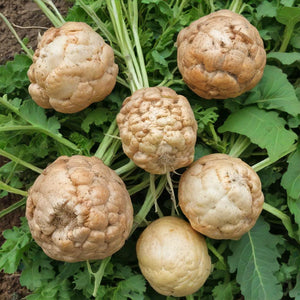- Hardiness Zone: 3-11 Biennial Often Grown As An Annual
Seed Depth: 1/8–1/4 inch
Seed Spacing: 6–8 inches
Row Spacing: 18–24 inches
Sunlight: Full sun to partial shade
Days to Sprout: 14–21 days
Days to Maturity: 110–120 days
Growth Habit: Upright, root-forming biennial grown as an annual
Sunlight: Thrives in full sun but tolerates partial shade, especially in warmer climates.
Soil Type: Prefers rich, well-drained soil with a pH of 6.0–7.5. Enrich soil with compost or organic matter for better growth.
When to Plant: Start seeds indoors 10–12 weeks before the last frost. Transplant outdoors when seedlings are 4–6 inches tall and temperatures stay above 50°F.
Direct Sowing: Not recommended due to the long growing season.
Indoor Sowing: Sow seeds 1/8–1/4 inch deep in trays or pots. Thin seedlings to the strongest ones before transplanting.
Succession Planting: Not typically needed; celeriac is a long-season crop.
Watering: Keep the soil consistently moist but not waterlogged. Mulch around plants to retain moisture and regulate soil temperature.
Fertilizing: Apply a balanced fertilizer at planting and again mid-season to support steady growth.
Pruning: Trim yellowing or damaged leaves to maintain plant health and redirect energy to root development.
Pest and Disease Control: Watch for aphids, slugs, and fungal diseases. Use organic pest control methods and maintain proper spacing for airflow.
When to Harvest: Harvest roots when they are 3–4 inches in diameter, typically 110–120 days after planting.
How to Harvest: Loosen the soil around the base with a garden fork and gently lift the roots.
Seed Collection: Allow plants to bolt in their second year to produce seeds. Collect seeds from dried flower heads.
Storing Seeds: Store seeds in an airtight container in a cool, dry place.
Why You’ll Love It
Gourmet Flavor: Mild, nutty, and earthy — a delicious substitute for potatoes in many dishes.
Large Roots: Produces big, round, pale bulbs with creamy white interiors.
Cold Hardy: Thrives in cool weather and improves in flavor after light frost.
Long Storage: Harvest in fall and store for months — excellent for winter meals.
Plant Characteristics
Height: 12–18 inches
Growth Habit: Upright leafy greens with a round, knobby root at the base
Root Type: Pale beige, rough-skinned bulb with firm, white interior
Days to Maturity: 100–120 days
Hardiness: Cool-season biennial grown as an annual
Flavor and Culinary Uses
Flavor: Mild, nutty, and slightly sweet — similar to a cross between celery and parsnip
Culinary Uses: Great for mashing, roasting, stews, gratins, purees, or shredding raw into slaws
Companion Planting Tips
Good Companions: Leeks, onions, carrots, and lettuce
Avoid Planting Near: Corn and potatoes (can compete for nutrients)
Bonus Benefit: Upright growth makes it easy to interplant with leafy crops and herbs
Common Issues and Solutions
Small or Misshapen Roots: Thin seedlings early and grow in loose, rich soil for best development
Pest Pressure: Watch for slugs and leaf miners — use row covers if needed
Slow Growth: Be patient — this is a long-season crop that rewards with exceptional flavor and storage
Seeds Per Packet
| 250mg | Approximately 535 |
| 750mg | Approximately 1,605 |
Why You’ll Love It
Gourmet Flavor: Mild, nutty, and earthy — a delicious substitute for potatoes in many dishes.
Large Roots: Produces big, round, pale bulbs with creamy white interiors.
Cold Hardy: Thrives in cool weather and improves in flavor after light frost.
Long Storage: Harvest in fall and store for months — excellent for winter meals.
Plant Characteristics
Height: 12–18 inches
Growth Habit: Upright leafy greens with a round, knobby root at the base
Root Type: Pale beige, rough-skinned bulb with firm, white interior
Days to Maturity: 100–120 days
Hardiness: Cool-season biennial grown as an annual
Flavor and Culinary Uses
Flavor: Mild, nutty, and slightly sweet — similar to a cross between celery and parsnip
Culinary Uses: Great for mashing, roasting, stews, gratins, purees, or shredding raw into slaws
Companion Planting Tips
Good Companions: Leeks, onions, carrots, and lettuce
Avoid Planting Near: Corn and potatoes (can compete for nutrients)
Bonus Benefit: Upright growth makes it easy to interplant with leafy crops and herbs
Common Issues and Solutions
Small or Misshapen Roots: Thin seedlings early and grow in loose, rich soil for best development
Pest Pressure: Watch for slugs and leaf miners — use row covers if needed
Slow Growth: Be patient — this is a long-season crop that rewards with exceptional flavor and storage
Seeds Per Packet
| 250mg | Approximately 535 |
| 750mg | Approximately 1,605 |





Share and get 15% off!
Simply share this product on one of the following social networks and you will unlock 15% off!